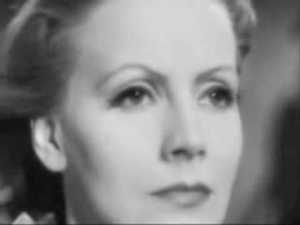Some notes on the face in cinema
by Kate
Greta Garbo: auteur of the face
The draw of the face
Watching a movie brings, among other things, the distinctive joy of looking at faces that are building-height. Watching an face extended in time, particularly an enormous one, is eternally riveting, no matter what it’s doing. The camera allows us to become attached to the sensibility of certain faces, those which help us in some way uncover the mystery of the visage and what makes it so fascinating in life and on camera.
In film, the close-up shot is defined by its proximity to the human face, which immediately speaks to the close relationship between human body and camera. The close-up draws our attention to the singular part of the human body that most guides our social interactions. Because the face is a marvelous expressive instrument, humans are especially attuned to the story told by its incremental movements. A face blown up on screen is like one under a microscope. We can look at it and try to understand its power. Only cinema allows the face in movement to be so giant and totemic.
There are so many great actresses, but I think Greta Garbo is the greatest actress when it comes to using her face. There’s a school of film theory that wants to bestow all creative power on the director, but actresses like Garbo prove how influential the humans in front of the camera continue to be.
Greta Garbo: the idea of the face
In his 1957 essay, The Face of Garbo, Roland Barthes somewhat puzzlingly refers to actress Greta Garbo’s face as “an Idea.” He notes the mask-like quality of her features, which he describes as sexually undefined. This androgynous characteristic enables her to play with gender in Queen Christina. In this film, Garbo plays a queen who runs off to the country disguised as a man. The scenario works because Garbo’s face is so heavily stylized. Her flaws are eliminated by lighting and makeup. This technique creates something of an ambiguous mask, which as Barthes mentions, is like a broad sketch of a face.
 Barthes then contrasts Greta Garbo with Audrey Hepburn, whose unique features are directly tied to her kittenish persona. Garbo’s features, in contrast, create a concept, “a Platonic Idea of the human creature.” In comparing the two, he conceives of a history told through a catalogue of cinematic faces. Garbo’s face, Barthes argues, represented the moment where cinema became interested in mortal rather than immortal faces, specifics rather than ideas.
Barthes then contrasts Greta Garbo with Audrey Hepburn, whose unique features are directly tied to her kittenish persona. Garbo’s features, in contrast, create a concept, “a Platonic Idea of the human creature.” In comparing the two, he conceives of a history told through a catalogue of cinematic faces. Garbo’s face, Barthes argues, represented the moment where cinema became interested in mortal rather than immortal faces, specifics rather than ideas.
Queen Christina
There’s something grand about Garbo, and Barthes is right to use Queen Christina as his primary example in this essay. In the film, Garbo’s queen is beloved by her people. Whenever she speaks to them- and thus to viewers- we are put under a spell. To her subjects, Christina is a symbol of leadership and near-god-like royalty. She is king, queen, man and woman. Her face is a surface that is and is not synonymous with these competing identities.
It is this ambiguity that makes the final shot of the film so compelling. The camera draws slowly into a close-up of Christina’s face. Having cast away her royal title, she is setting sail for Spain. Soon, the deep close-up fills the screen. Her features barely move. She doesn’t blink. The only movement is her hair billowing behind her as she looks out over the prow of the boat.
In this moment director Rouben Mamoulian wanted Garbo’s face to be a blank page, as the story goes. He wanted the audience to do the writing. Without the expression of the body to guide us, we are left with a blank contour of a face- an idea. It’s an idea that only Greta Garbo standing before the camera can give us.

[…] Biography | whmuk | SelectiveViewing | VintageWife.co.uk | Frenys | CelebsWithoutEyebrows | DisneyDreaming | […]